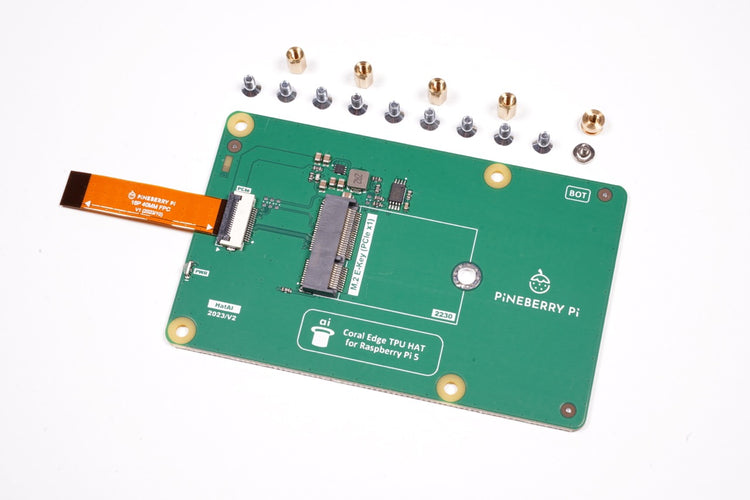In the rapidly evolving world of Artificial Intelligence (AI) and single-board computing, a groundbreaking combination has emerged to redefine home surveillance. Introducing the Pineberry AI Hat, a cutting-edge accessory that seamlessly connects to the Raspberry Pi 5 via the latest PCIe Express bus, incorporating an M.2 slot engineered specifically for the Coral AI Edge TPU.
The Coral AI Edge TPU, a mere $25 device, packs a punch that can outperform a $2,000 CPU. Leveraging the PCIe interface at Gen 3 speeds, this dynamic duo promises to bring AI capabilities to the Raspberry Pi like never before.
In a captivating demonstration, the Pineberry AI Hat is put to the test, running Frigate's open-source Network Video Recorder (NVR) for home surveillance. The Frigate setup, with TPU-accelerated machine learning, not only showcases the capabilities of this AI-powered solution but also delves into its practicality and worth.
Building the Setup: A Cost-Effective Journey
The fully loaded cost for this innovative setup is a mere $44 USD, breaking down to a $19 AI Hat and a $25 Coral AI chip. In comparison, the USB accelerator option costs around $60, relying on USB 3.0. The PCIe version, however, not only offers potentially faster speeds but also incorporates thermal management, crucial for continuous 24/7 operation.
The blog post details the step-by-step process of mounting the TPU onto the AI Hat, connecting the components to the Raspberry Pi 5, and the scripts required to set up the Coral AI on the Raspberry Pi OS 64-bit. The instructions, commands, and optimizations are neatly laid out, making it accessible for enthusiasts and hobbyists.
Putting AI to the Test: Frigate and Beyond
The demonstration showcases the Pineberry AI Hat in action, running Frigate with a $15 webcam and highlighting its person detection capabilities. With events triggered by the presence of individuals in the frame, the Pineberry AI Hat demonstrates its prowess in practical scenarios.
The blog post further explores the possibilities beyond Frigate, discussing the potential use of Google's Pie Coral library for custom TensorFlow Lite models. Dockerizing the environment for Pie Coral is also explored, offering flexibility to users who prefer a containerized approach.
Future Explorations and Considerations
The article concludes with a glimpse into potential future explorations, including the use of a dual Edge TPU setup, compatibility with the Raspberry Pi's official M.2 hat, and the intriguing question of running multiple Edge TPUs on a single Raspberry Pi.
In a world where technology constantly pushes boundaries, the Pineberry AI Hat and Raspberry Pi 5 combination opens new doors for AI enthusiasts, hobbyists, and those seeking advanced yet affordable solutions for home surveillance. The blog post serves as a comprehensive guide, inviting readers to embark on a journey into the exciting realm of AI-powered home security with Raspberry Pi.
You can watch the full how to building video from here:




0 comments:
Post a Comment